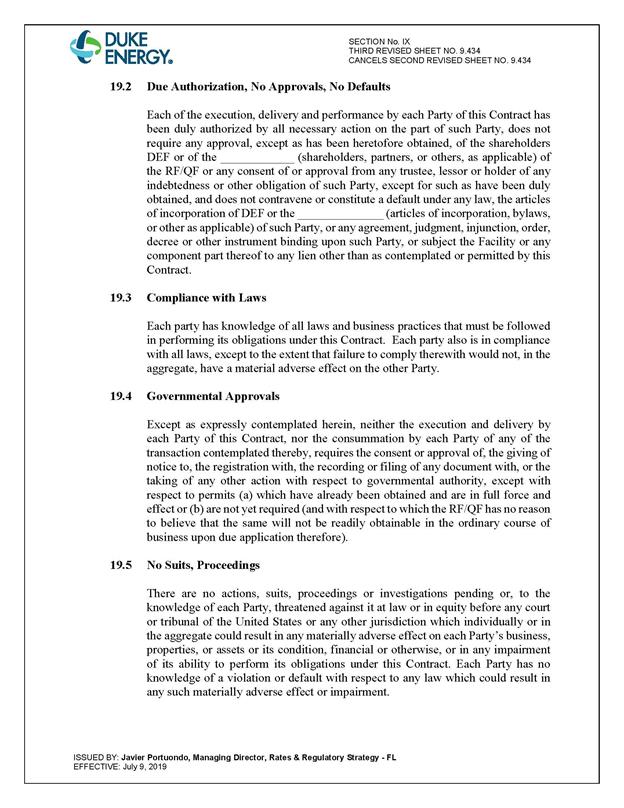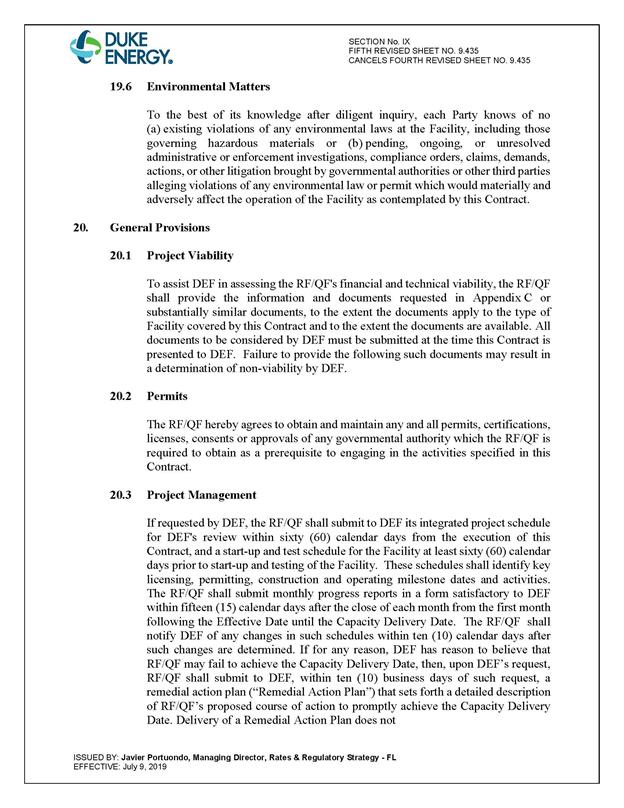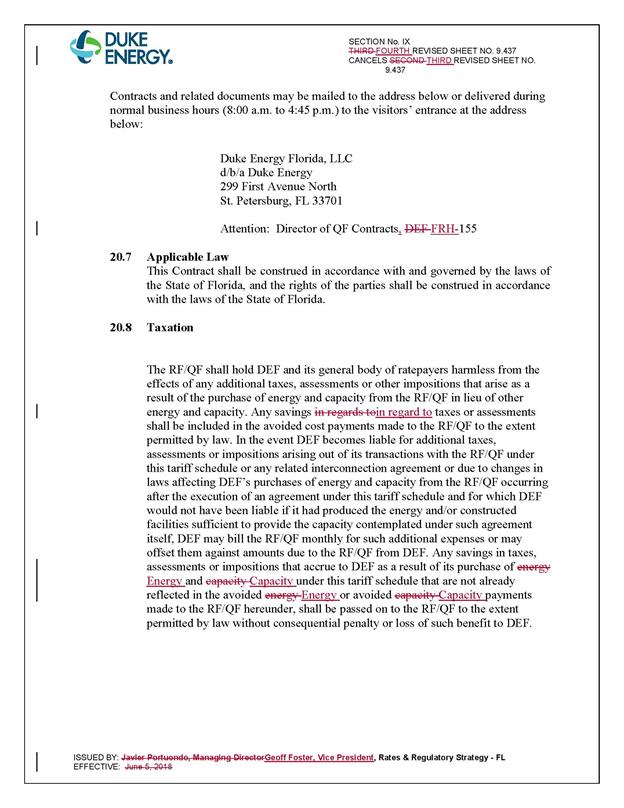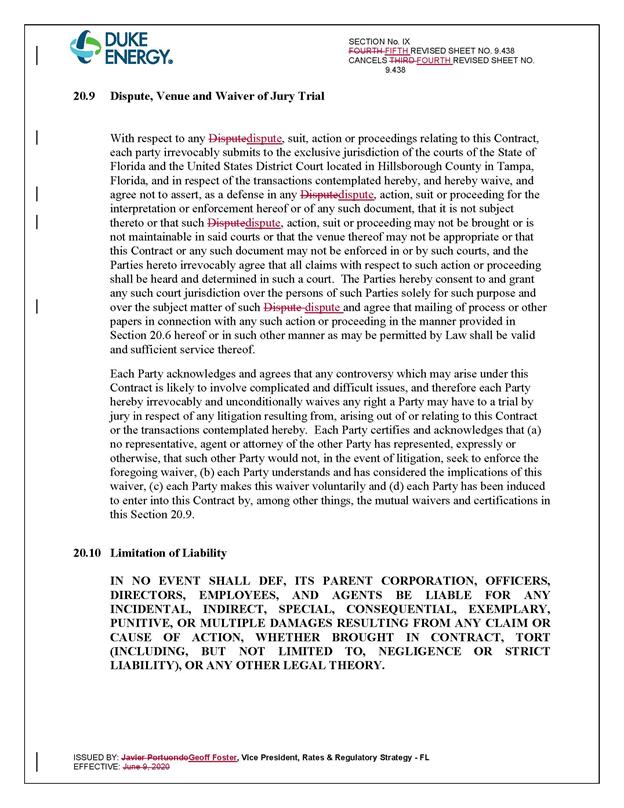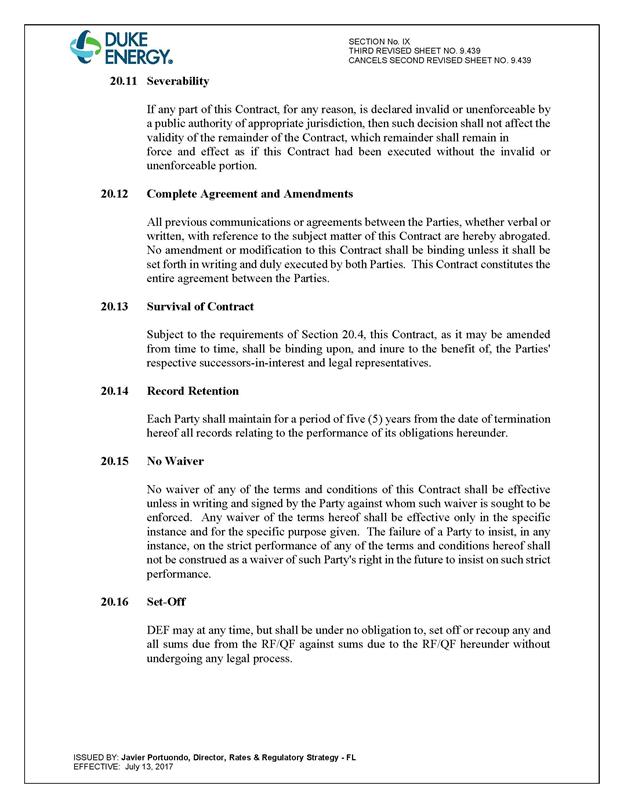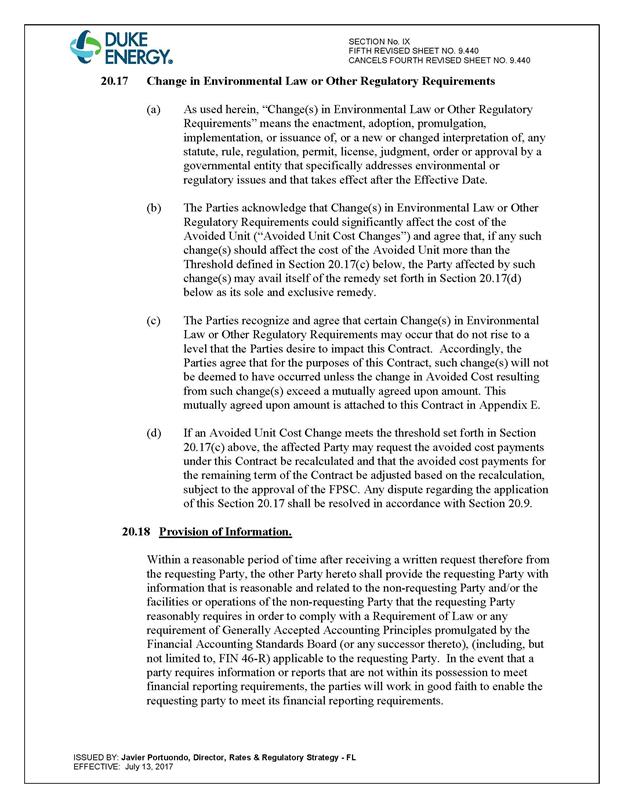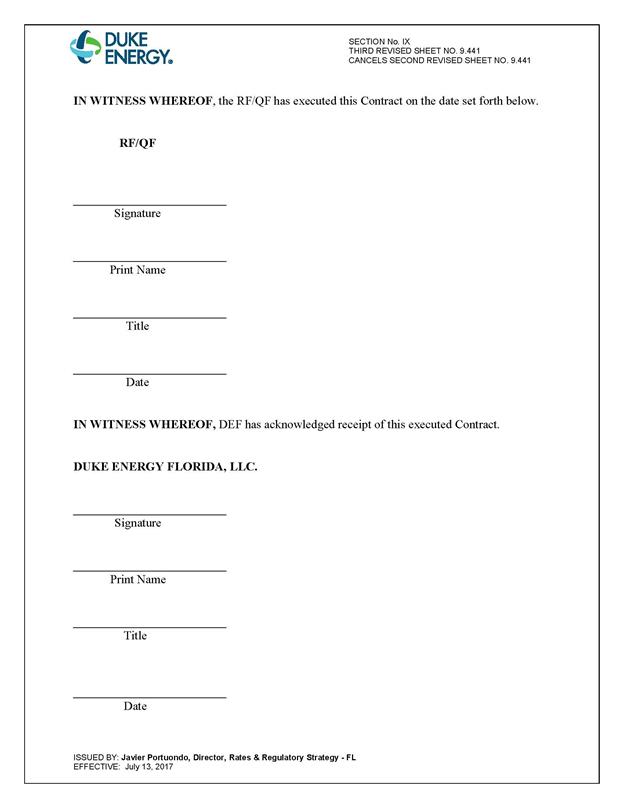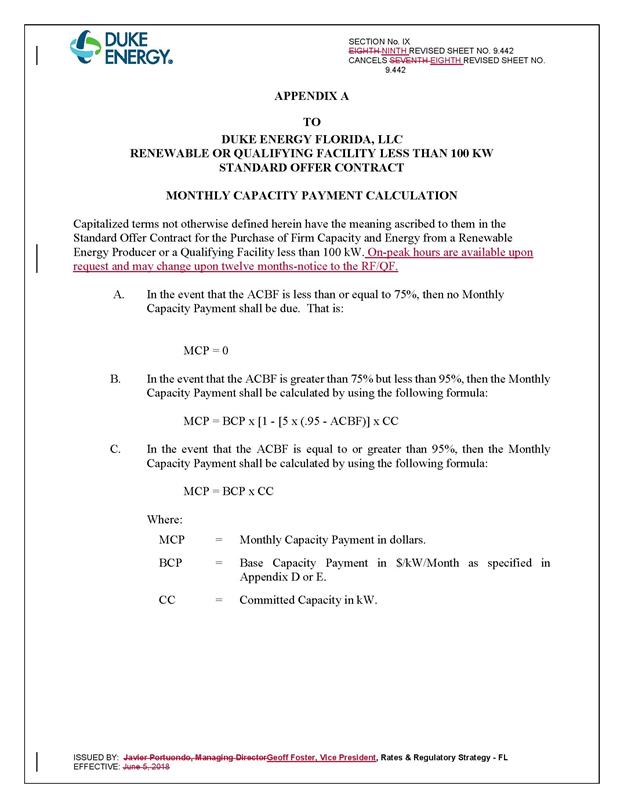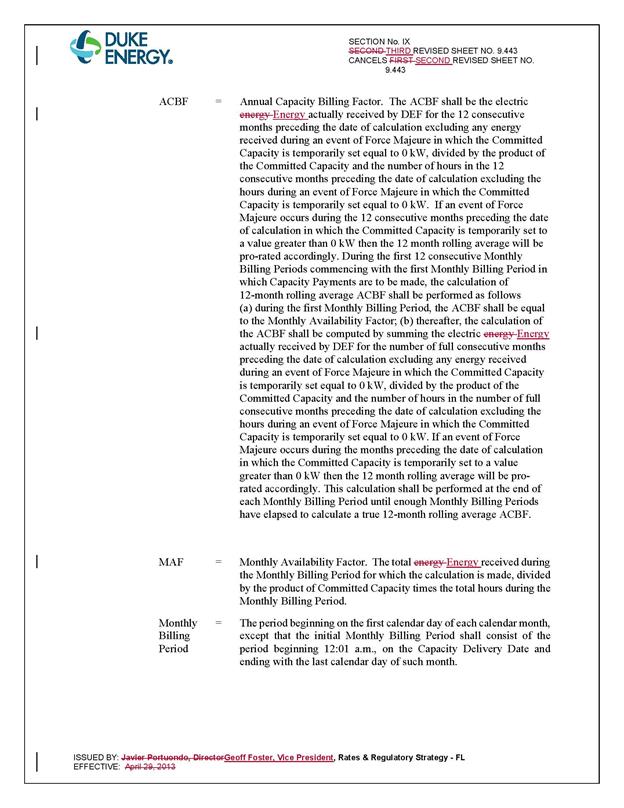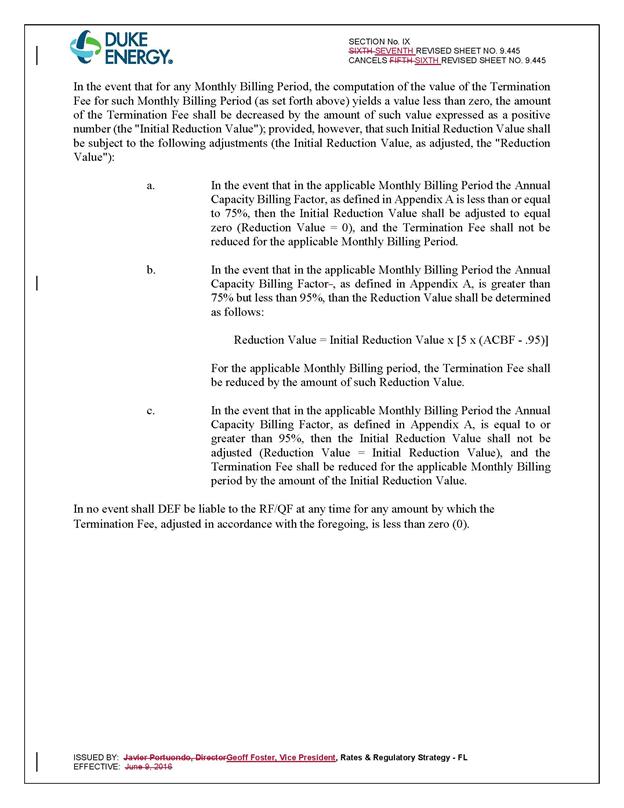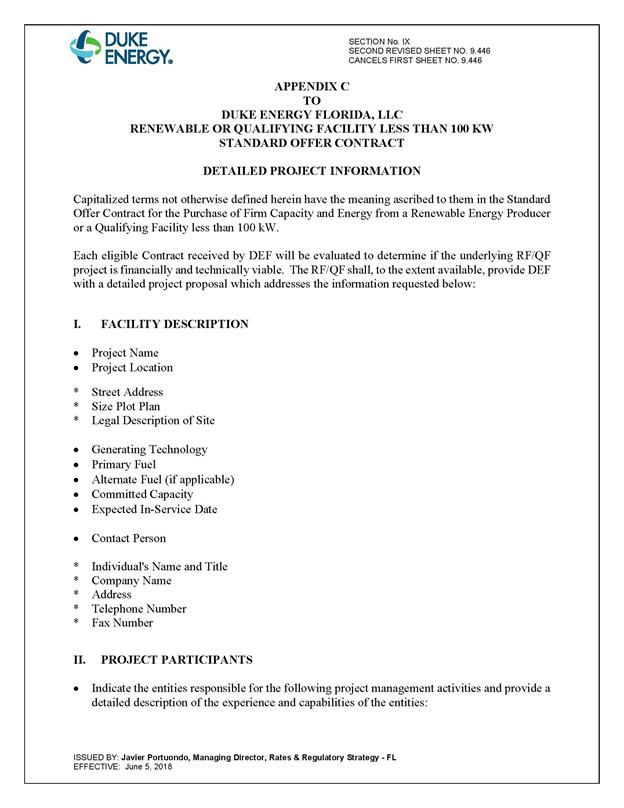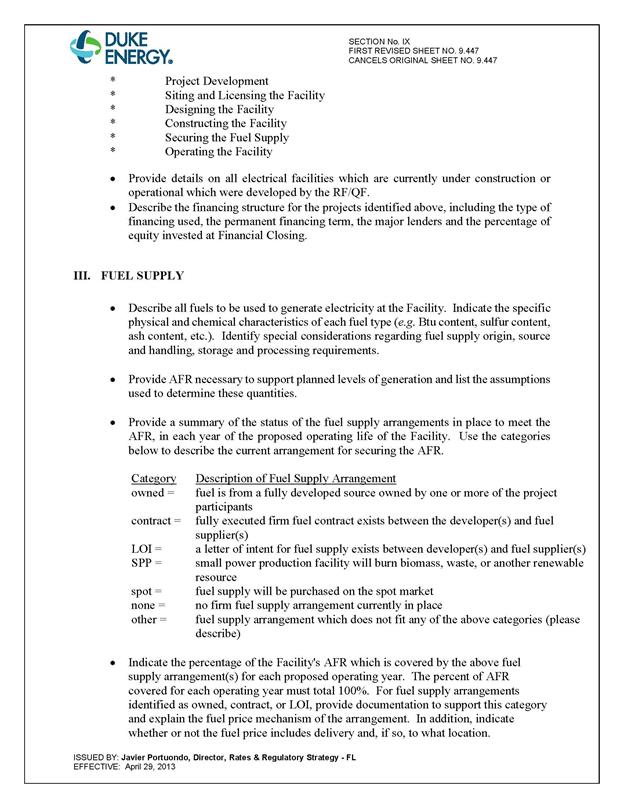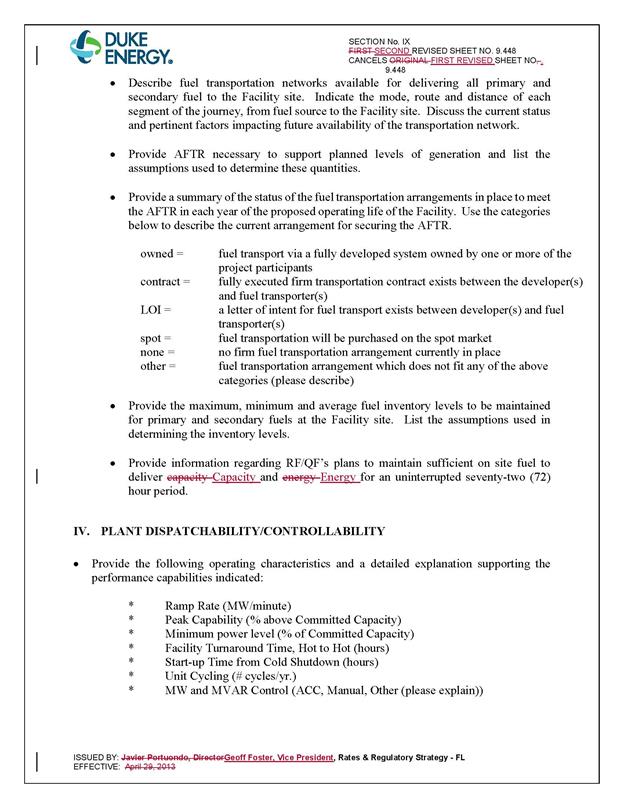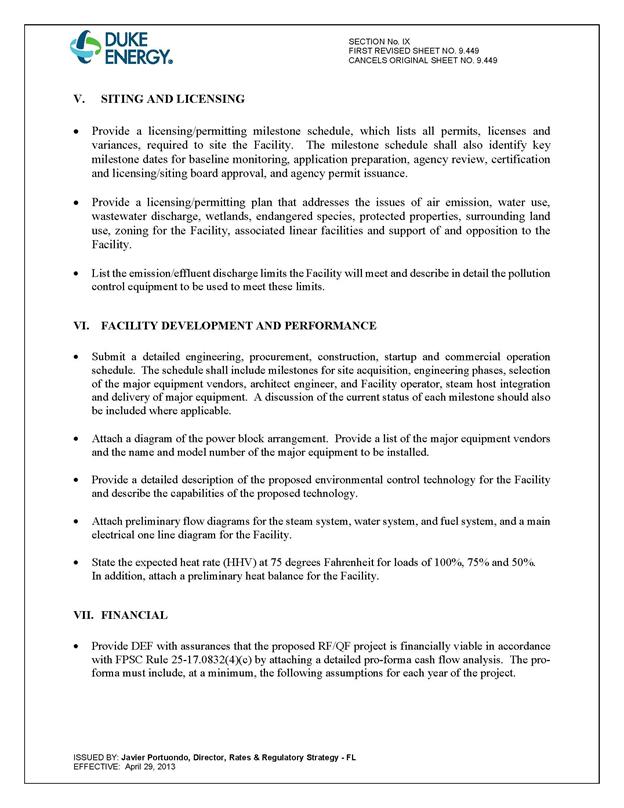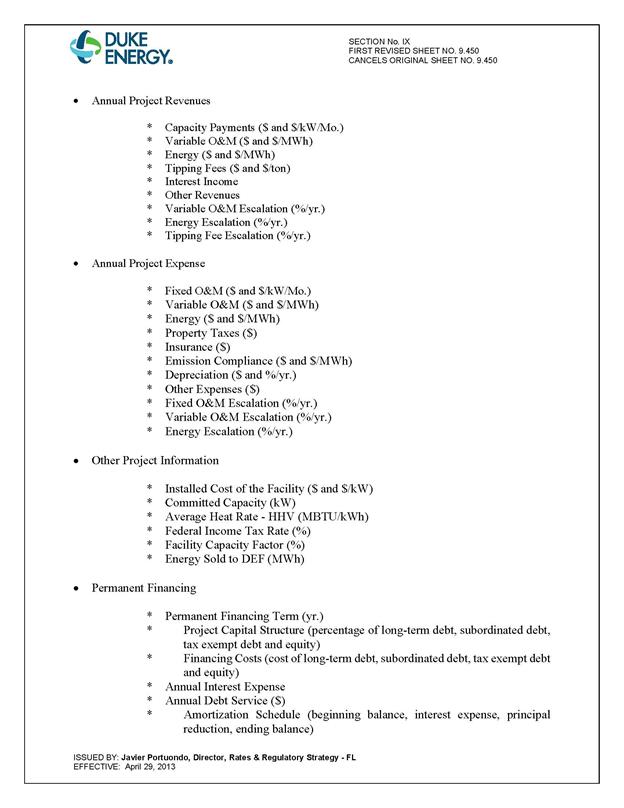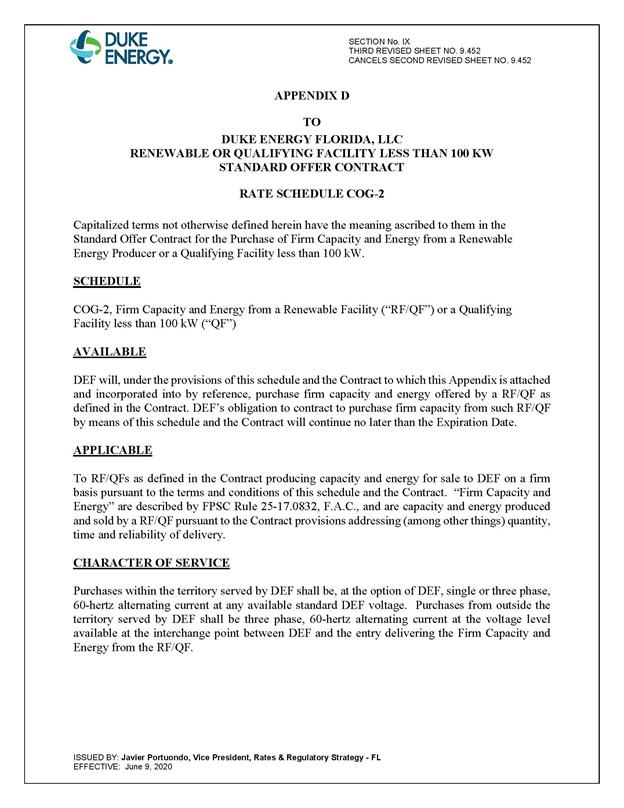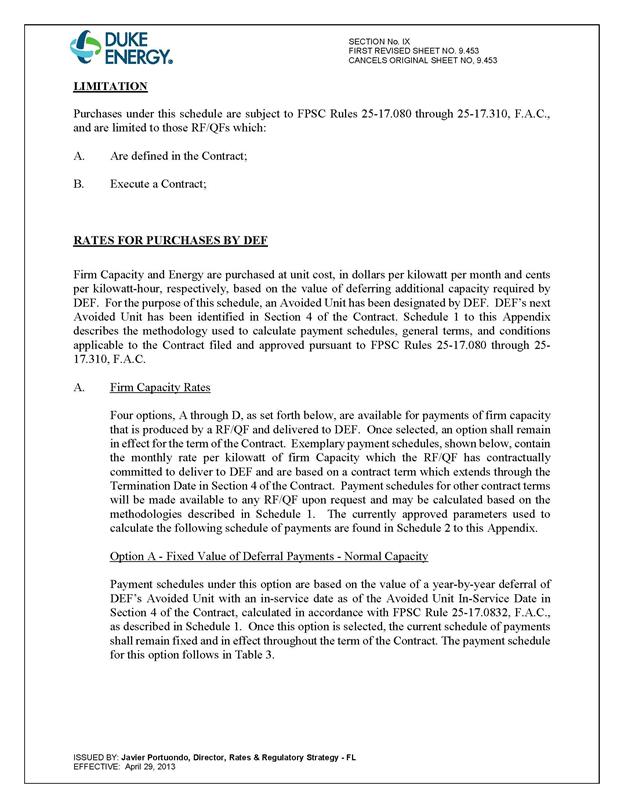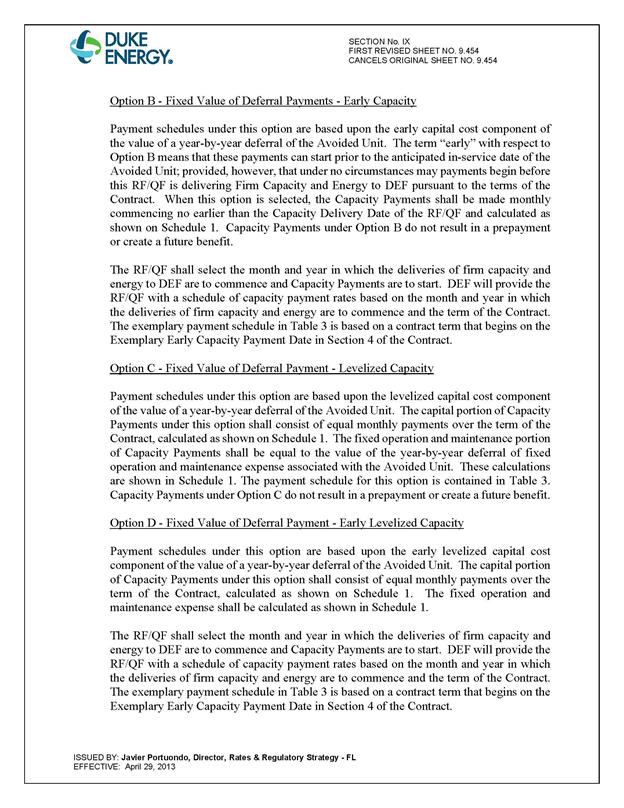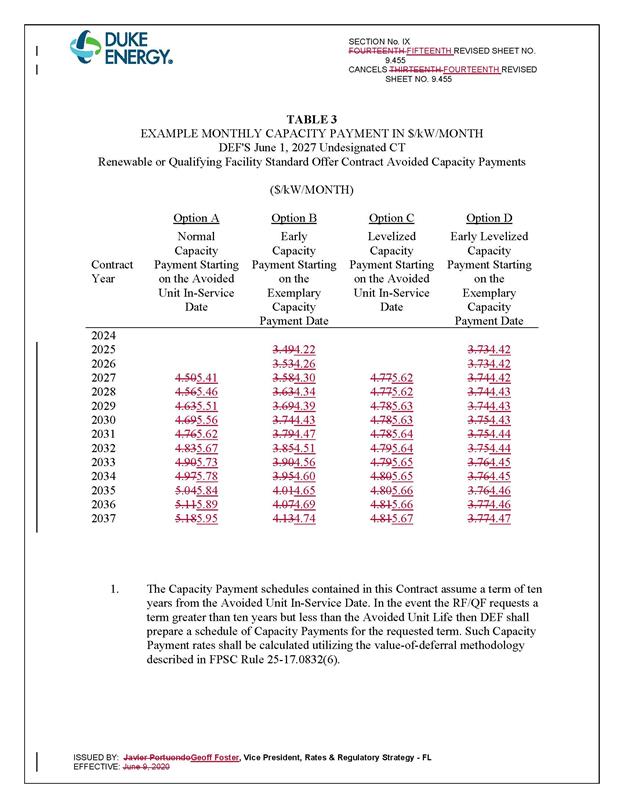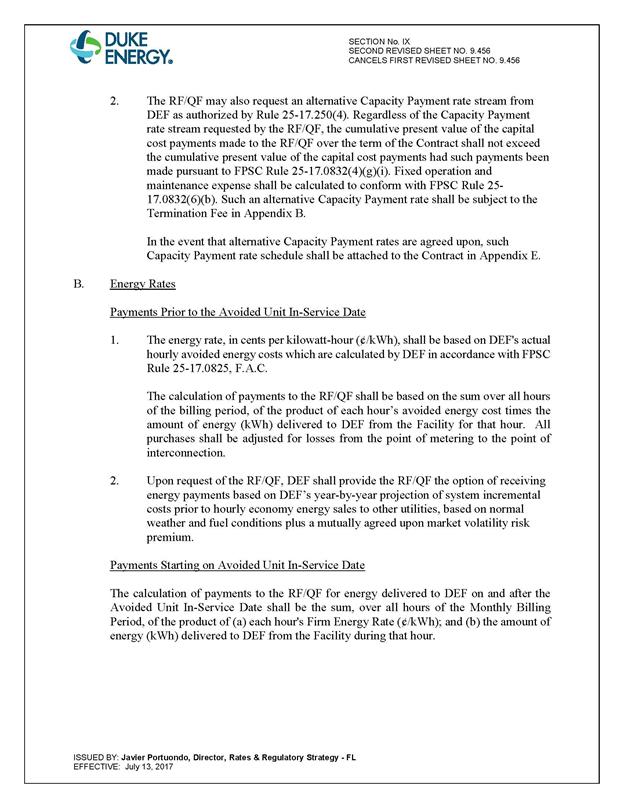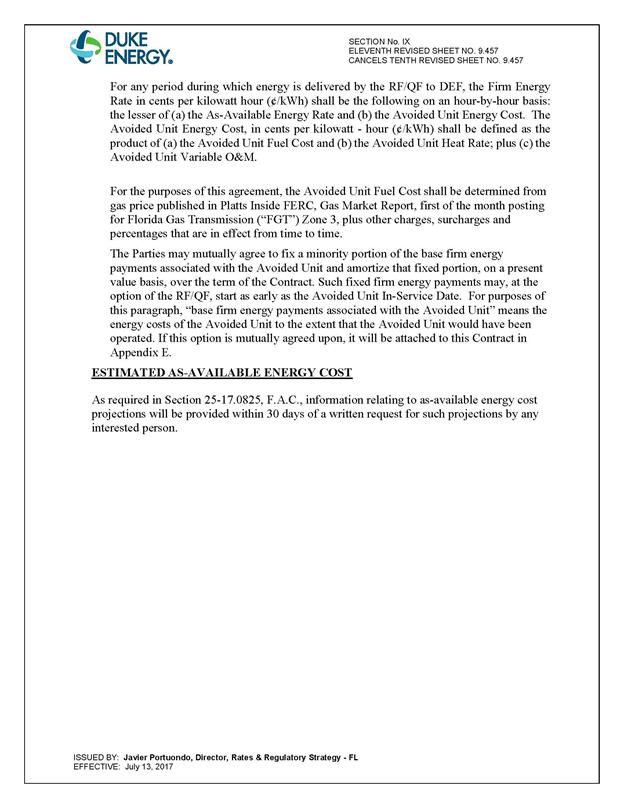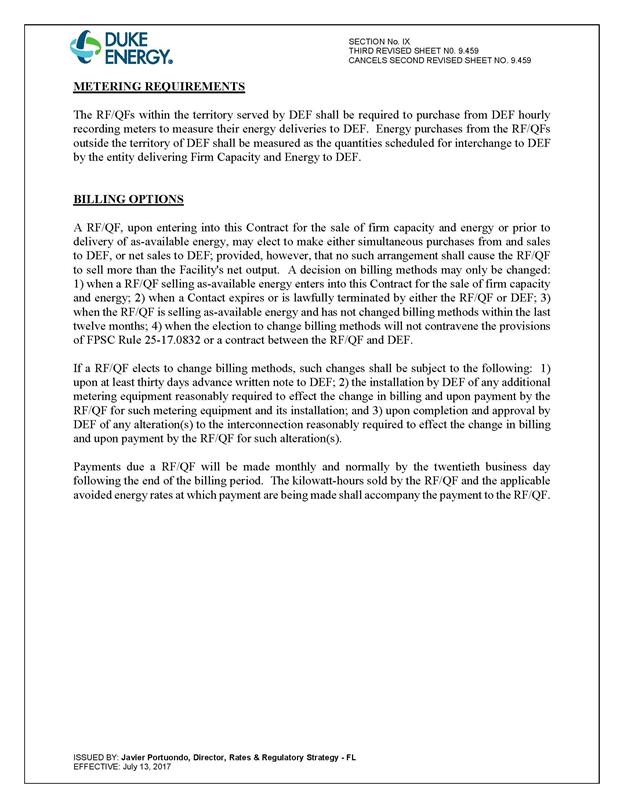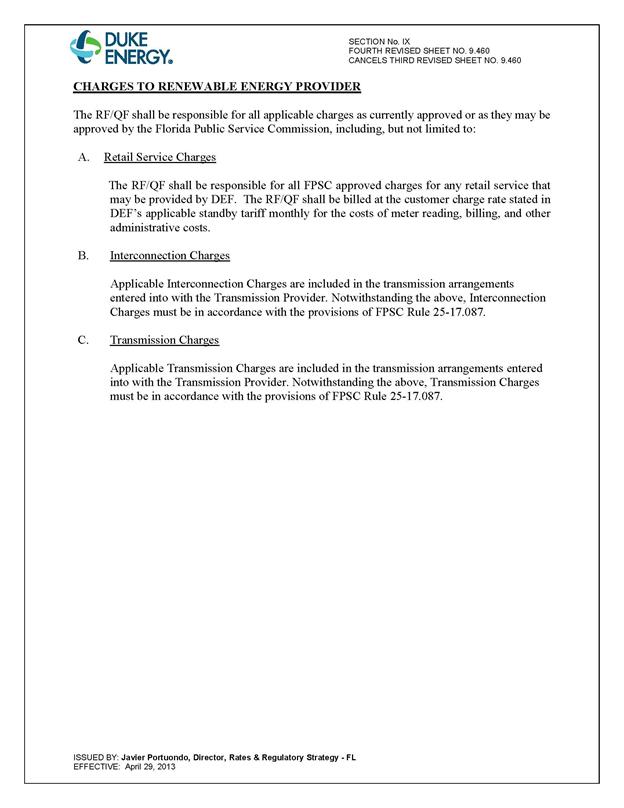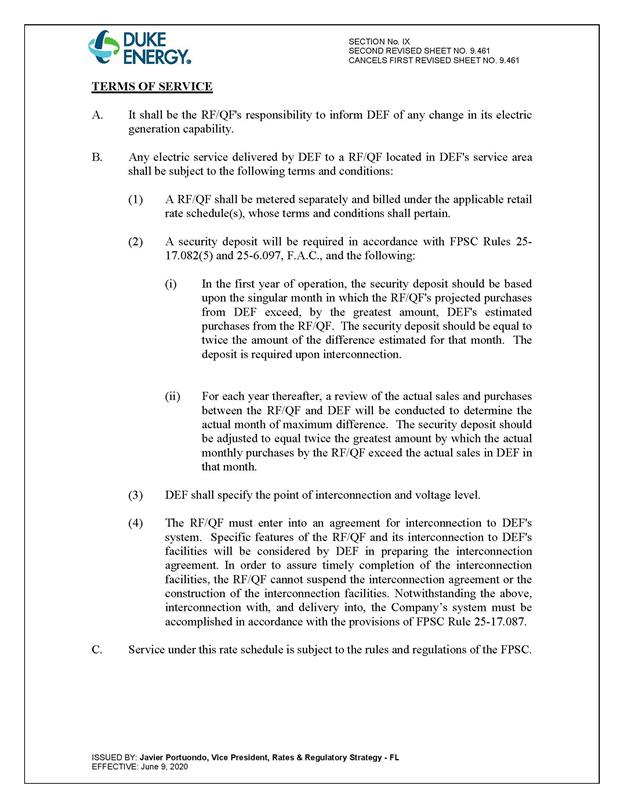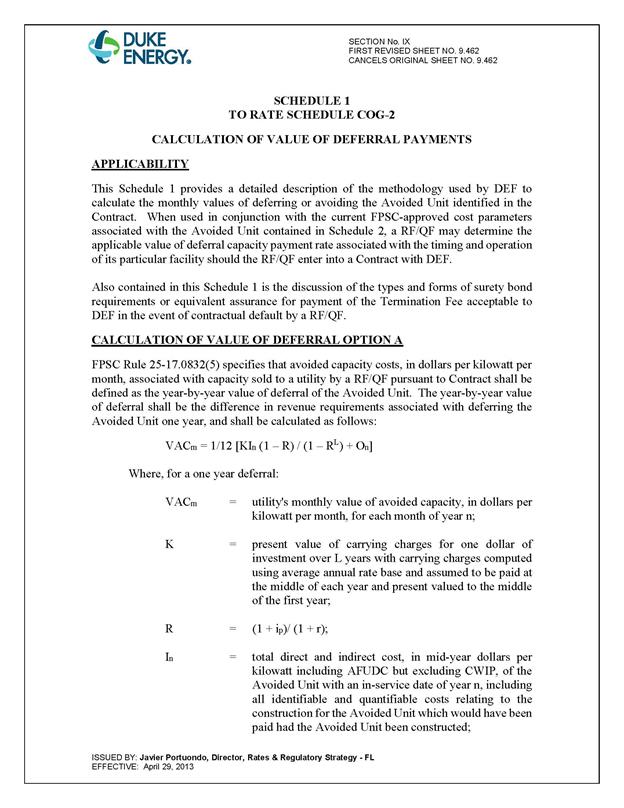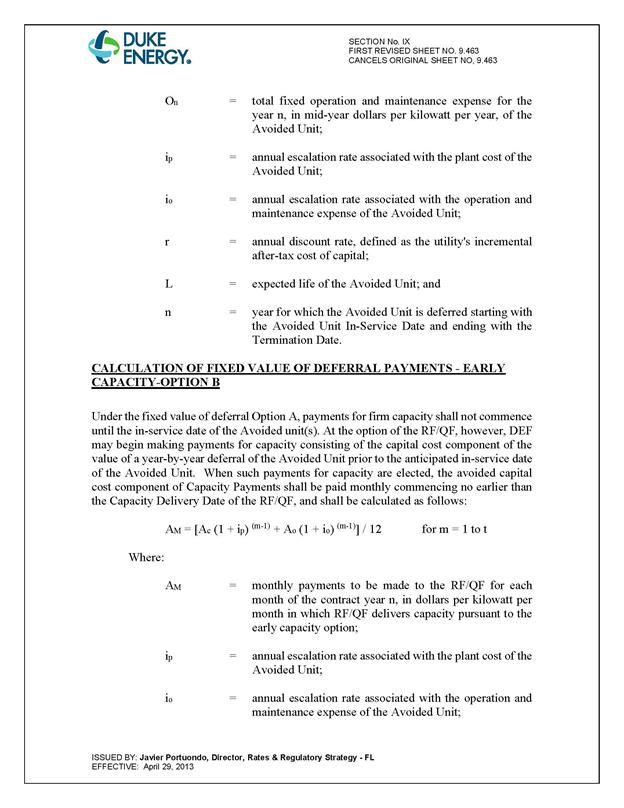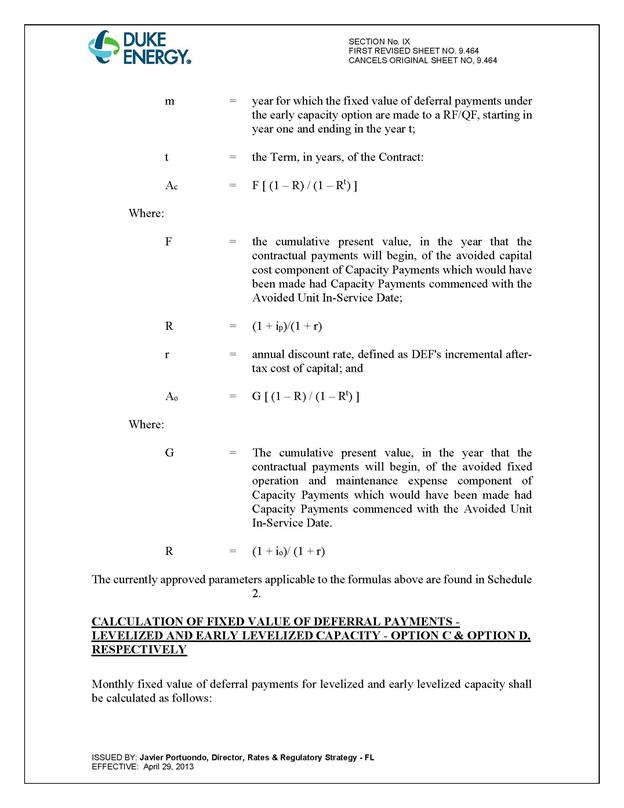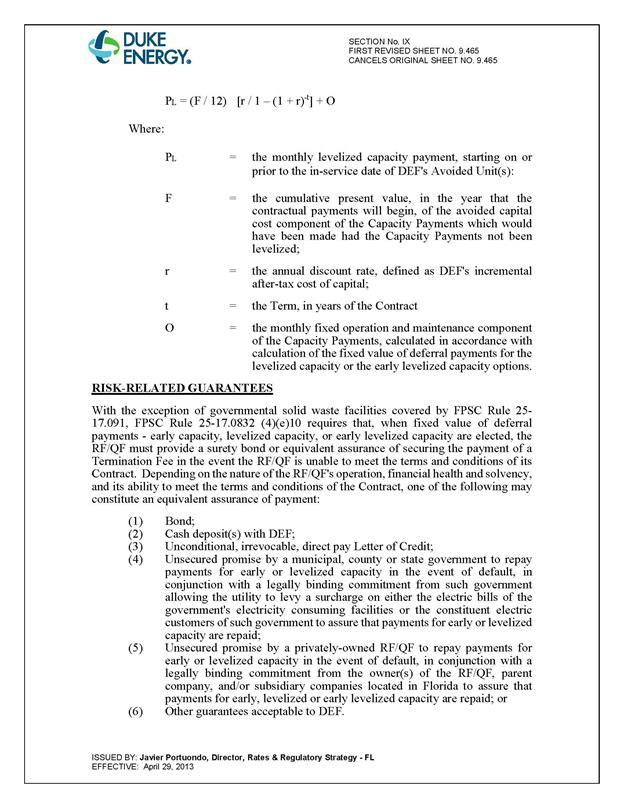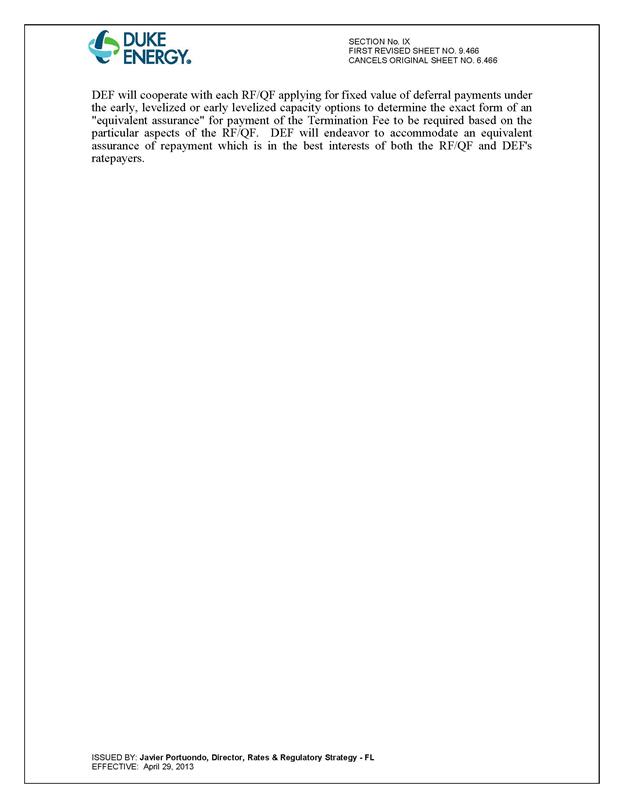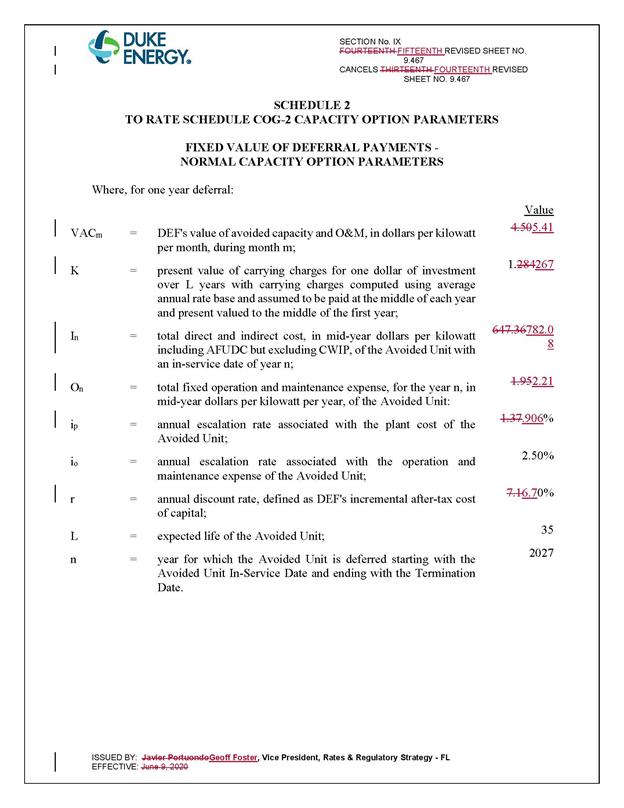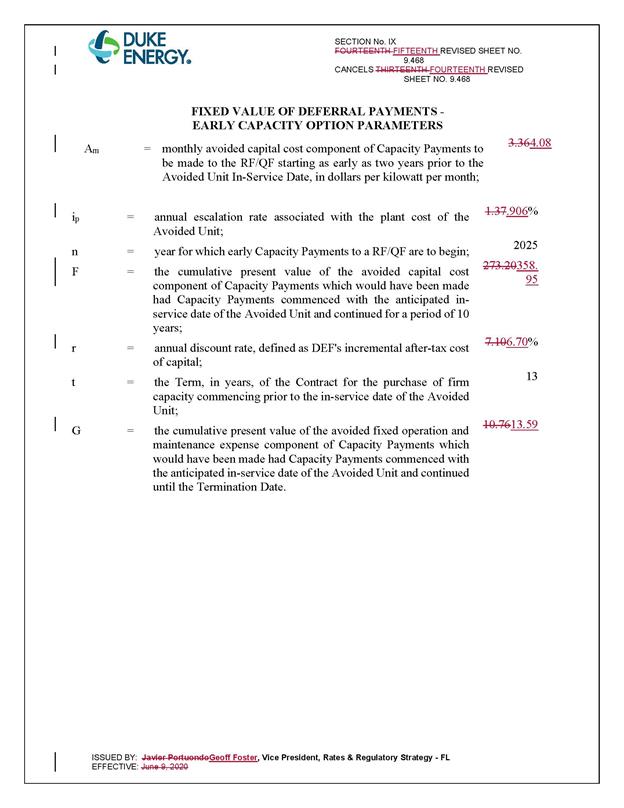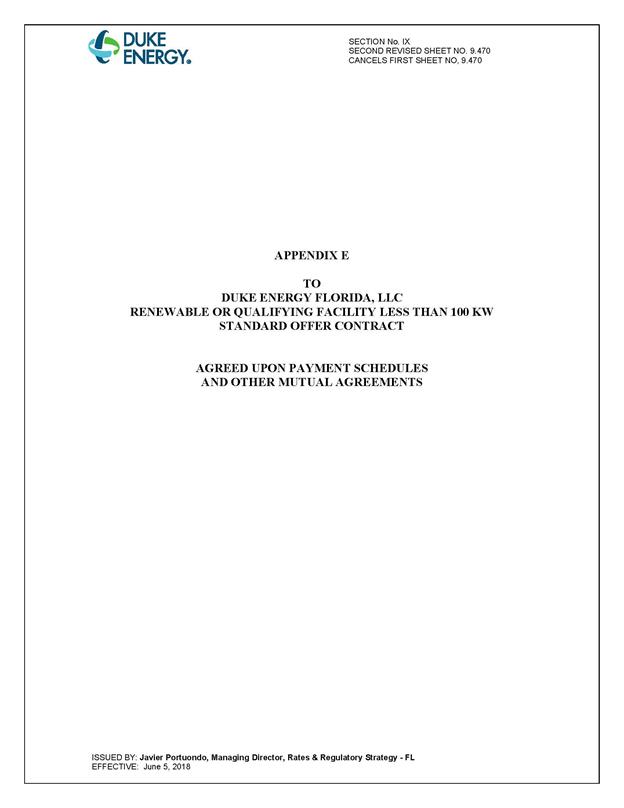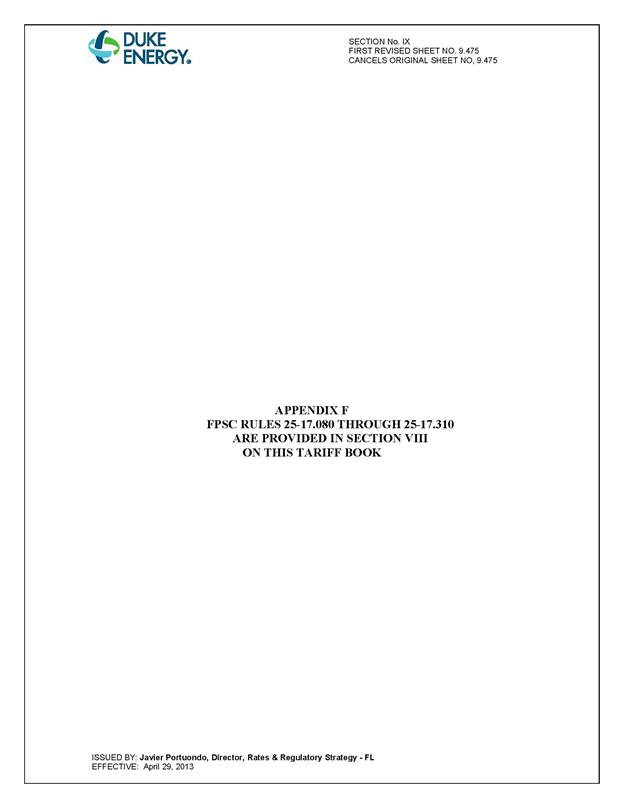Case Background
Section
366.91(3), Florida Statutes (F.S.), requires each investor-owned utility (IOU)
to continuously offer to purchase capacity and energy from renewable generating
facilities and small qualifying facilities. Florida Public Service Commission
(Commission) Rules 25-17.200 through 25-17.310, Florida Administrative Code
(F.A.C.), implement the statute and require each IOU to file with the
Commission, by April 1 of each year, a revised standard offer contract based on
the next avoidable fossil fueled generating unit of each technology type
identified in the utility’s current Ten-Year Site Plan. On April l, 2021, Duke Energy Florida, LLC (DEF) filed a petition for
approval of its amended standard offer contract and rate
schedule COG-2, based on its 2021 Ten-Year Site Plan. The Commission has
jurisdiction over this amended standard offer contract pursuant to Sections
366.04 through 366.055, and 366.91, F.S.
Discussion
of Issues
Issue 1:
Should the Commission
approve the amended standard offer contract and rate schedule COG-2 filed by
Duke Energy Florida, LLC?
Recommendation:
Yes. The provisions of DEF’s amended standard offer
contract and associated rate schedule COG-2 conform to all requirements of
Rules 25-17.200 through 25-17.310, F.A.C. The amended standard offer contract
provides flexibility in the arrangements for payments so that a developer of
renewable generation may select the payment stream best suited to its financial
needs. (Kistner)
Staff Analysis:
Section 366.91(3), F.S., and Rule 25-17.250, F.A.C.,
require that DEF, an IOU, continuously make available a standard offer contract
for the purchase of firm capacity and energy from renewable generating
facilities (RF) and small qualifying facilities (QF) with design capacities of
100 kilowatts (kW) or less. Pursuant to Rules 25-17.250(1) and (3), F.A.C., the
standard offer contract must provide a term of at least 10 years, and the
payment terms must be based on the utility’s next avoidable fossil-fueled
generating unit identified in its most recent Ten-Year Site Plan, or if no
avoided unit is identified, its next avoidable planned purchase. DEF has
identified a 214 megawatt (MW) natural gas-fueled combustion turbine (CT) as
the next planned generating unit in its 2021 Ten-Year Site Plan. The projected
in-service date of the unit is June 1, 2027.
Under DEF’s standard offer contract, the RF/QF operator
commits to certain minimum performance requirements based on the identified
avoided unit, such as being operational and delivering an agreed upon amount of
capacity by the in-service date of the avoided unit, and thereby becomes
eligible for capacity payments in addition to payments received for energy. The
standard offer contract may also serve as a starting point for negotiation of
contract terms by providing payment information to an RF/QF operator, in a
situation where one or both parties desire particular contract terms other than
those established in the standard offer.
In order to promote renewable generation, the Commission
requires the IOU to offer multiple options for capacity payments, including the
options to receive early or levelized payments. If the RF/QF operator elects to
receive capacity payments under the normal or levelized contract options, it
will receive as-available energy payments only until the in-service date of the
avoided unit (in this case June 1, 2027), and thereafter, begin receiving
capacity payments in addition to the energy payments. If either the early or
early levelized option is selected, then the operator will begin receiving
capacity payments earlier than the in-service date of the avoided unit.
However, payments made under the early capacity payment options tend to be
lower in the later years of the contract term because the net present value
(NPV) of the total payments must remain equal for all contract payment options.
Table 1
contains DEF’s estimates of the annual payments for each payment option
available under the revised standard offer contract to an operator with a 50 MW
facility, operating at a capacity factor of 95 percent, which is the minimum
capacity factor required under the contract to qualify for full capacity
payments. Normal and levelized capacity payments begin with the projected
in-service date of the avoided unit (June 1, 2027).
Table
1 - Estimated Annual Payments to a 50 MW Renewable Facility
(95% Capacity Factor)
|
Year
|
Energy Payment
|
Capacity Payment (By Type)
|
|
Normal
|
Levelized
|
Early
|
Early Levelized
|
|
$(000)
|
$(000)
|
$(000)
|
$(000)
|
$(000)
|
|
2022
|
8,627
|
-
|
-
|
-
|
-
|
|
2023
|
7,544
|
-
|
-
|
-
|
-
|
|
2024
|
7,167
|
-
|
-
|
-
|
-
|
|
2025
|
7,608
|
-
|
-
|
2,529
|
2,678
|
|
2026
|
8,657
|
-
|
-
|
2,553
|
2,681
|
|
2027
|
9,677
|
1,893
|
1,997
|
2,578
|
2,683
|
|
2028
|
11,293
|
3,276
|
3,426
|
2,603
|
2,685
|
|
2029
|
12,746
|
3,307
|
3,429
|
2,628
|
2,687
|
|
2030
|
14,176
|
3,339
|
3,431
|
2,653
|
2,690
|
|
2031
|
14,392
|
3,371
|
3,434
|
2,679
|
2,692
|
|
2032
|
14,828
|
3,404
|
3,438
|
2,704
|
2,695
|
|
2033
|
15,171
|
3,436
|
3,441
|
2,731
|
2,697
|
|
2034
|
16,198
|
3,470
|
3,444
|
2,757
|
2,700
|
|
2035
|
17,207
|
3,503
|
3,447
|
2,784
|
2,702
|
|
2036
|
18,167
|
3,537
|
3,451
|
2,811
|
2,705
|
|
2037
|
18,489
|
3,571
|
3,454
|
2,838
|
2,708
|
|
2038
|
19,487
|
3,606
|
3,458
|
2,865
|
2,711
|
|
2039
|
21,514
|
3,641
|
3,461
|
2,893
|
2,714
|
|
2040
|
23,182
|
3,676
|
3,465
|
2,921
|
2,717
|
|
2041
|
24,485
|
3,712
|
3,469
|
2,950
|
2,720
|
|
Total
|
290,613
|
50,740
|
50,243
|
46,476
|
45,863
|
|
Total (NPV)
|
142,477
|
22,896
|
22,896
|
22,896
|
22,896
|
Source: DEF’s Response to Staff’s First Data Request
DEF’s standard offer contract, in type-and-strike format,
is included as Attachment A to this recommendation. The changes made to DEF’s
amended tariff sheets are consistent with the updated avoided unit. In addition
to changes associated with the avoided unit, DEF made other minor revisions to
its tariff sheets. For example, on Sheet No. 9.442, DEF added additional
language allowing RF/QFs to request data regarding on-peak hours, and noted
that they may change over time, with a 12-month notice provision.
Conclusion
Staff recommends that the amended standard offer contract
and rate schedule COG-2 be approved as filed. The provisions of DEF’s amended
standard offer contract and associated rate schedule conform to all
requirements of Rules 25-17.200 through 25-17.310, F.A.C. The amended standard
offer contract provides flexibility in the arrangements for payments so that a
developer of renewable generation may select the payment stream best suited to
its financial needs.
Issue 2:
Should this docket be closed?
Recommendation:
Yes. This docket should be closed upon issuance of a
consummating order, unless a person whose substantial interests are affected by
the Commission’s decision files a protest within 21 days of the issuance of the
Commission’s Proposed Agency Action Order. Potential signatories should be
aware that, if a timely protest is filed, DEF’s standard offer contract may
subsequently be revised. (Weisenfeld)
Staff Analysis:
This docket should be closed upon the issuance of a
consummating order, unless a person whose substantial interests are affected by
the Commission’s decision files a protest within 21 days of the issuance of the
Commission’s Proposed Agency Action Order. Potential signatories should be
aware that, if a timely protest is filed, DEF’s standard offer contract may
subsequently be revised.




































